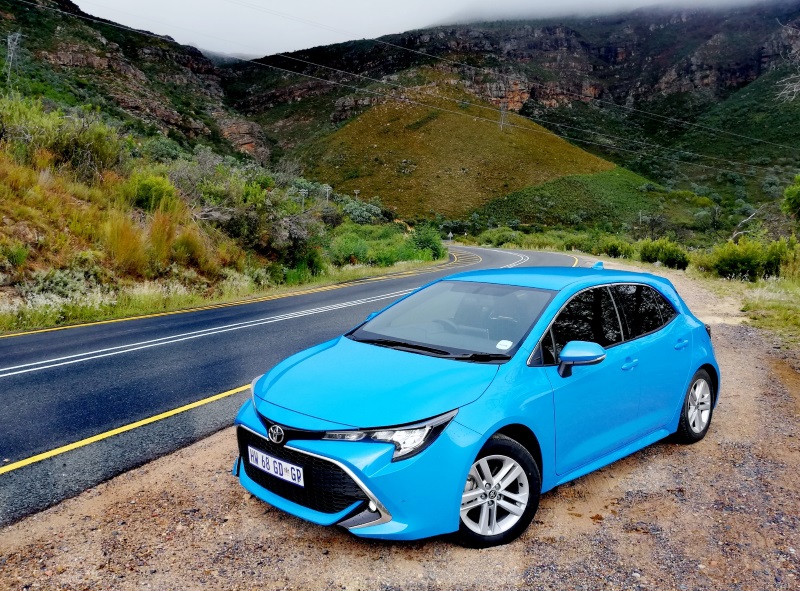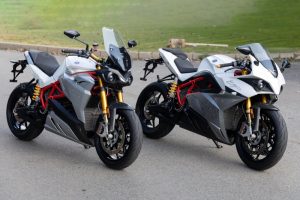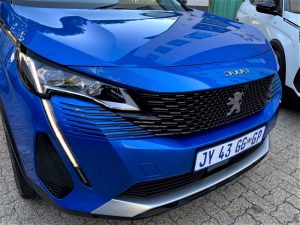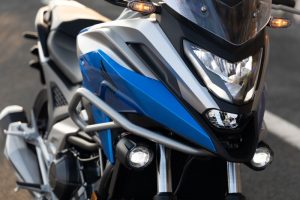At last, a Toyota with a dash of verve.
I guess all manufacturers are guilty at one time or another of slapping a badge on the back of one of their products because the badge in question has more equity value than the badge that was previously employed. British Leyland were champions at it such that the same underwear was shared by innumerable models, each of which carried a different name justified by the amount of chrome pinned to the flanks or by a grille with differently-executed strakes. Maybe that was just one reason why the company doesn’t exist anymore.
Now Toyota has elected to do much the same thing by ditching the unfancied Auris nameplate and sticking a Corolla badge on the rump of their new hatchback. There’s one very important difference at play here in that the Auris was ordinariness personified whereas its usurper, the Corolla Hatch, is endowed with transformed driving dynamics headlined by a pleasingly-sweet turbo motor and by a chassis that now stands comparison with Europe’s front runners.

For years, Toyota has resisted the use of forced-induction, doubtless primarily on cost grounds and perhaps on grounds of longevity, but given that the bulk of vehicle sales take place in the rarified atmosphere of the highveld, I’m sure many-a-Toyota-owner has grimaced when his/her 1.6 or 1.8 litre saloon gets despatched at the lights or on a long rise by a pesky 1.2 hiding a puffer under the bonnet.
I’ve long been a proponent of turbo-charging and in 21 years of personal use, not one of my cars so-equipped has ever displayed the slightest problem related to the turbo installation. Maybe using the specified high-grade lubricants and allowing for an idle period before shutdown has helped, but these little things have been more than worthwhile given the vastly improved performance offered by stuffing pressurised air into the combustion chamber.
In everyday use though, it’s the massive improvement in low end torque that matters most. Where smaller, normally aspirated engines need to spin at well over 4 000 rpm to achieve maximum torque, even the smallest turbo engine achieves a much higher torque output at half (or less) the number of revolutions. This means the engine is much more responsive and most importantly, it means that much higher gearing can be employed. Open road cruising is conducted in greater tranquillity because the engine doesn’t have to scream its head off, and that in turn translates into improved fuel consumption and, one would assume, greater engine life despite the higher combustion pressures.

This long preamble is a prelude not to a Honda but to my week’s tenure of a brand-new Corolla hatch fitted with the excellent 1.2 turbo motor that is also doing service in the C-HR. The four cylinders, despite their diminutive swept volume, collectively generate up to 85kW at 5 200 rpm and even more significantly, a torque peak of 185Nm that holds station all the way from 1 500 to 4 000 rpm.
That’s sufficient power to make the Corolla feel decently lively when pressed – that means 0-100 in 10.4 s and a top end of 190 km/h – but most importantly, the engine never feels as though it has to work too hard in give-and-take driving. There’s even decent vocal restraint when the “loud” pedal is mashed into the carpet thanks in part to good inherent sound insulation and to the muffling effects of the turbo, but also to the fact that the motor spins smoothly for a four. Now who would ever believe just a few years back that a 1.2 litre motor could be described as lively AND pleasingly refined at the same time?
Another benefit of that broad torque plateau is that filling stations can be avoided for longer as my overall figure of 7.7l/100km demonstrates. On the motorway, a figure in the low sixes was commonplace while town driving yielded mid-eights.

Now to a more controversial subject as far as motive elements are concerned, and that’s the gearbox. Japanese manufacturers seem to have a love affair with CVT (stands for Constantly Variable Transmission) gearboxes while motoring journos love to hate such devices because they seem to be half asleep most of the time, quite apart from being endowed with “virtual” shift characteristics.
You will therefore have worked out that this Corolla continues the CVT trend – a 6-speed manual is available in the base XS model – but it’s not all bad. Step-off is just fine and in typical unhurried driving conditions, the transmission is quiet and totally unobtrusive, which I guess is the idea behind an ideal CVT. It’s when pressed that the typical elastic band feel comes into play – the car feels as though it’s being held back from delivering all the energy on offer. This is most evident in Eco mode. Sport mode makes the transmission feel less restrained but that may just be a function of sharper engine responses.
On first acquaintance, I thought the power steering was nothing other than spot on, offering effortless wheel movement in urban driving, but at speed on the open road, the reduced assistance is a tad overdone and around the centre position, the slightest movement induces directional changes which require some concentration to avoid minor side-to-side movements. Most unusually, I would suggest the introduction of a fraction more free play would resolve the issue. The brakes need no tweaking as they are powerful, progressive and easy to feather when coming to a stop.
A tad unusually for a C-segment contender, this Corolla sports a dual wishbone rear end to complement a MacPherson strut arrangement in the nose. The result is a thoroughly-controlled ride which errs slightly on the firm side but which has enough pliancy built-in to ensure that comfort levels are fine even on broken surfaces. Rather old-school 205/55R16 tyres wrap multi-spoke alloy wheels and doubtless contribute to the ride comfort without causing any undue instability issues when rapid directional changes are made.
That suspension does its work quietly while wind and road-induced noises are very well suppressed too, the former no doubt aided by the use of double door seals all-round. The end result is a hatchback that drives well and offers very good levels of refinement by the standards of the class. Dare I say it, but this is good enough to worry the front runners from Europe.
Externally, the Corolla is notable for the extreme rake of its windscreen and for the rather hefty front overhang. This creates a silhouette that’s positively sporty by Toyota’s traditionally conservative standards, but I do worry about the simply massive size of the front and rear bumper assemblies which I have no doubt will require a visit to your bank manager if replacements are ever needed.
Happily, the paintwork is smooth and glossy and most of the panel gaps are tight and even with the exception of the hatch surround which is sullied by a gap at least double that of the doors. Those doors all open and close easily but don’t exactly sound like a bank vault, notwithstanding the good fit.
Inside, a relatively long wheelbase liberates more fore and aft space than appearances might suggest which tells you that even adults can enjoy decent long-distance comfort in the rear quarters. Owing to the presence of a full-size spare wheel, luggage space is rather mean at 294 litres, but the rear seat can be folded to accommodate all madame’s shopping and suitcases!

The well-padded, multi-adjustable seating in the XR is composed of a mix of leather and alcantara with heating for those up front and a fully adjustable leather-bound wheel for the driver. The assymetric panelling of the dash, a Toyota idiosyncrasy if I may use an unkind term, is a trifle odd but there’s enough soft-surfacing around to overcome scratchy plastics in the lesser-viewed areas. As a result, the cabin has a pleasant aura about it and is therefore a nice place to occupy beyond a mere visit to the local shops.

Oddments space isn’t overly generous but the same cannot be said about the excellent equipment levels found in this version. The usual electric windows and mirrors, the latter being heated and retractable, are joined by dual zone climate control, LED lighting, a centrally-mounted touch-screen infotainment unit with much better graphics than of old, AUX and USB ports, Bluetooth, keyless entry/start, rear camera, cruise control, blind-spot monitoring, front and rear centre armrests and more.
Safety is looked after by front, side, curtain and knee (driver only) air bags while dual ISOFIX mountings are present in the rear.
Whatever badge this Toyota carries on its rump, it represents a most pleasing advance for the brand in terms of driving dynamics in particular. The turbo engine and a very nicely judged suspension set-up see to that. With a more responsive transmission, the formula would be even more convincing but in fairness, it’s only when pressing on that the usual CVT slothfulness becomes evident. Boot space too is compromised by the presence of a full-size spare but practicality as far as the cabin goes is just fine. With the stampede to compact SUVs showing no signs of abating, this hatchback has its work cut out to make a significant impression, but it has the credentials to make a good fist of it.
Price as at May 2019: From R367 100-00. Warranty: 3yr/100 000 km.
Article & Photos: Richard Wiley










More Stories
Peugeot 3008 GT Line
2021 Santa Fe nou meer begeerlik
KIA SONET